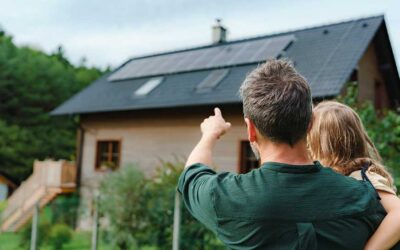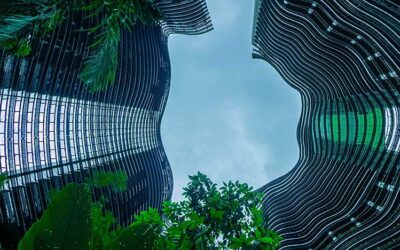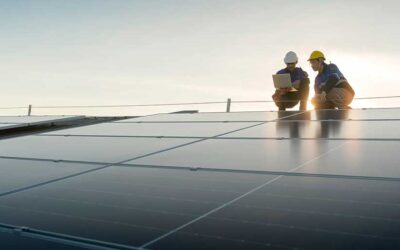Understanding Sustainable Construction Practices
The construction industry is transforming as it embraces sustainable practices. This shift is driven by a collective recognition of the urgent need to minimize the industry’s environmental impact.
Traditional construction methods have a significant environmental impact. Concrete production alone accounts for nearly 8% of global carbon dioxide emissions, and construction and demolition waste comprise a significant portion of landfill sites worldwide.
Sustainable construction practices aim to reduce the environmental impact of construction by using eco-friendly materials, energy-efficient technologies, and sustainable construction equipment. This shift towards sustainable construction is essential to protect our planet’s resources and build a more sustainable future.
This journey through the realm of sustainable construction will delve into the intricacies of this industry’s transformation. Each facet plays a crucial role in shaping a more sustainable future, from sustainable materials and energy-efficient designs to innovative green construction equipment and waste reduction strategies. Along the way, we will encounter inspiring case studies, explore emerging trends, and invite you to join in the conversation about the future of construction.
The Environmental Impact of Traditional Construction
Traditional construction practices have long been associated with significant environmental drawbacks. In this section, we delve into these methods’ detrimental effects on our planet, shedding light on the urgent need for a shift towards sustainable alternatives.
Wasted Resources and Energy
Traditional construction methods often result in excessive resource consumption. This includes the energy-intensive extraction of raw materials, such as concrete and steel, contributing to a substantial carbon footprint. In addition, transporting these materials to construction sites further exacerbates energy consumption and emissions.
Land Disruption and Habitat Loss
Large-scale construction projects, particularly those in urban areas, frequently require clearing natural landscapes. This disrupts local ecosystems and contributes to habitat loss for various species. The impact is particularly concerning in regions with fragile or endangered ecosystems.
Construction Waste
One of the most concerning aspects of traditional construction is the generation of copious amounts of construction waste. Building sites are notorious for producing significant volumes of debris and materials that often end up in landfills. This wasteful practice has severe environmental consequences, including soil and water pollution.
Air and Noise Pollution
Construction sites are notorious sources of air and noise pollution. Diesel-powered machinery, heavy equipment, and constant construction activities emit pollutants into the air, degrading air quality and posing health risks to nearby communities. The constant noise generated by construction can also disrupt the well-being of residents and wildlife in the vicinity.
Limited Energy Efficiency
Traditional buildings are notorious for their poor energy efficiency. Inefficient heating, ventilation, air conditioning systems, and inadequate insulation lead to excessive energy consumption. This, in turn, increases the demand for fossil fuels and contributes to greenhouse gas emissions.
Erosion and Runoff
The alteration of landscapes during construction can lead to increased soil erosion and runoff. Sediment-laden runoff can harm aquatic ecosystems and disrupt waterways. It also requires costly erosion control measures to mitigate the damage.
The environmental impact of traditional construction practices is undeniable. It places enormous stress on our planet’s resources, contributes to habitat loss and pollution, and exacerbates climate change. However, the construction industry is not blind to these issues. In the following sections, we will explore how the industry is making strides toward sustainability and adopting greener practices to address these environmental concerns.
The Transition to Green Building Practices
The construction industry has undergone a significant transformation in recent years, steering its course towards green building practices. This transition is driven by a confluence of factors, including environmental concerns, stricter regulations, and the growing recognition of the long-term benefits of sustainable construction.
The Green Awakening
As construction practices of yesteryears continued to take a toll on the environment, stakeholders in the industry began to reassess their approaches. This awakening led to a shift toward more sustainable and eco-friendly practices. The awareness of finite resources and the desire to reduce the carbon footprint of construction projects played a pivotal role in initiating this transformation.
Regulatory Push
Government regulations and building codes have increasingly placed greater emphasis on sustainability. Many regions have introduced mandatory green building standards, prompting construction companies to adapt or face non-compliance penalties. This regulatory push has created a strong incentive for the industry to embrace green construction practices.
Consumer Demand
With heightened awareness about environmental issues, consumers are now more inclined to choose eco-friendly buildings and products. Homebuyers and commercial property tenants often prefer green-certified structures, recognizing their benefits in lower utility costs and a healthier indoor environment. This demand has encouraged construction companies to incorporate sustainable features into their projects.
Economic Viability
Sustainable construction practices are no longer considered an added expense but a wise investment. Energy-efficient buildings, for example, can significantly reduce operational costs over their lifespan. As energy prices continue to rise, the financial benefits of sustainable construction have become more evident, making it a financially viable choice for businesses and homeowners alike.
Technological Advancements
Advancements in construction technology have made it easier than ever to implement sustainable practices. From energy-efficient HVAC systems to advanced building materials, technology has become an enabler of green construction. The availability of eco-friendly equipment and machinery has also played a crucial role in reducing the industry’s environmental impact.
International Awareness
The issue of climate change has taken center stage on the global platform. International organizations, governments, and industry leaders are aligning their efforts to combat climate change. As a significant contributor to carbon emissions, the construction industry has responded by integrating sustainable practices into its core operations.
This transition to green building practices is not just a passing trend but a fundamental shift reshaping the construction landscape. As construction companies continue to recognize sustainability’s environmental, economic, and societal benefits, the industry is set to embrace an era where green is the new norm. In the following sections, we will delve deeper into the specific aspects of sustainable construction, from eco-friendly materials to energy-efficient designs and innovative equipment.
Sustainable Materials
As the construction industry continues to embrace eco-friendly practices, one of the key areas of focus is the use of sustainable materials. These materials reduce the environmental impact of construction projects and offer a range of benefits in terms of durability, energy efficiency, and aesthetics.
Wood Reimagined: Traditional lumber is being replaced by engineered wood products like cross-laminated timber (CLT) and laminated veneer lumber (LVL). These materials are sourced from sustainably managed forests and possess impressive structural qualities. CLT, for instance, has gained popularity in constructing tall buildings due to its strength and lightness.
Recycled and Reclaimed: Recycling and reusing materials are at the heart of sustainable construction. Recycled steel and aluminum are commonly used for structural elements, reducing the demand for virgin resources. Reclaimed bricks and stones add character to buildings while reducing the need for new production.
Local Sourcing: To minimize the carbon footprint associated with transportation, construction projects are increasingly turning to locally sourced materials. This reduces emissions and supports local economies. For example, using locally quarried stone for landscaping reduces emissions and promotes the distinctiveness of a region’s architecture.
Low-impact Concrete: Concrete is a ubiquitous construction material and a significant contributor to carbon emissions. Low-impact alternatives like geopolymer and aerated concrete offer similar strength and durability with a substantially lower environmental footprint. Additionally, concrete mixing and curing innovations reduce water usage, which is crucial for sustainability.
High-performance Insulation: Sustainable construction isn’t just about the structure itself; it’s also about creating energy-efficient buildings. High-performance insulation materials like soy-based foam, wool, and recycled denim provide better thermal resistance and contribute to a healthier indoor environment.
Bamboo Brilliance: Bamboo is emerging as a superstar in sustainable construction. It grows rapidly and is exceptionally strong, making it an ideal choice for flooring, cabinetry, and structural elements. Its renewability and versatility make it a favorite among architects and builders seeking sustainable solutions.
Biodegradable Building Blocks: Imagine building materials that decompose harmlessly when they reach the end of their lifespan. Biodegradable building blocks from materials like mycelium (mushroom roots), hemp, or even seaweed are gaining traction. They offer a renewable and biodegradable alternative to traditional plastics.
Solar Active Materials: Solar power integration in construction is no longer limited to rooftop panels. Building-integrated photovoltaics (BIPV) generate electricity while serving as structural components. Solar roof tiles and transparent solar windows are innovative examples of how buildings can generate clean energy.
Green Roofing: Green roofs, adorned with vegetation, provide insulation, reduce stormwater runoff, and contribute to urban biodiversity. They’re becoming increasingly popular in sustainable construction projects.
Smart Materials: Materials that respond to environmental conditions are on the horizon. Smart glass, for instance, can tint automatically to control light and heat, reducing the need for energy-intensive heating and cooling systems.
Incorporating these sustainable materials into construction projects isn’t just an environmental choice; it’s a practical one. They enhance building performance, reduce long-term maintenance costs, and contribute to a greener, more sustainable future for the construction industry. As the industry continues to innovate, these materials will play a pivotal role in reshaping the way we build.
Energy Efficiency in Construction
As the world grapples with the challenges posed by climate change, the construction industry is embracing energy-efficient practices to mitigate its environmental impact. This section explores energy efficiency’s vital role in modern construction, offering a glimpse into the innovative technologies and design principles shaping the industry’s greener future.
Embracing the Energy-Efficient Revolution
Energy-efficient construction is not merely a buzzword; it’s a pragmatic response to the pressing need to reduce energy consumption and greenhouse gas emissions. Today, architects and builders prioritize energy-efficient building designs that seamlessly blend aesthetics with functionality. These designs aim to harness natural resources like sunlight and wind while minimizing the reliance on conventional energy sources.
The Advantages of Energy Efficiency
Beyond the ecological benefits, energy-efficient construction also offers compelling economic advantages. Lower energy bills are a welcome relief for homeowners and businesses alike. Moreover, governments and municipalities often provide incentives and tax breaks for energy-efficient construction, making it a financially prudent choice.
Innovations in Building Technologies
Energy-efficient technologies continue to advance at a rapid pace. LED lighting systems replace traditional bulbs, reducing energy consumption and providing longer-lasting illumination. Smart HVAC (Heating, Ventilation, and Air Conditioning) systems are becoming commonplace, optimizing temperature control and reducing energy waste.
Building Performance and Certification
Construction projects increasingly adhere to green building standards and certifications to ensure that energy-efficient goals are met. Prominent examples include LEED (Leadership in Energy and Environmental Design) and ENERGY STAR. These certifications attest to a building’s environmental responsibility and energy efficiency, adding value to the property.
The Role of Construction Management Software
Effective project management plays a critical role in energy-efficient construction. Construction management software helps optimize resource allocation, scheduling, and communication among project stakeholders. This software contributes to energy conservation and cost savings by streamlining operations and reducing inefficiencies.
Sustainability as a Standard
As energy-efficient practices become more accessible and economically viable, they are gradually becoming the standard rather than the exception in construction. The industry is making strides toward a greener future, from residential buildings to commercial complexes. In this ever-evolving landscape, staying updated on the latest energy-efficient technologies and trends is essential for builders, designers, and homeowners alike.
Green Construction Equipment
In the quest for sustainability within the construction industry, one of the most significant advancements has been developing and adopting eco-friendly construction equipment. These innovative machines reduce the industry’s environmental impact and offer economic benefits to construction companies.
Green Equipment Innovations
Green construction equipment encompasses a wide range of machinery designed to minimize emissions, reduce fuel consumption, and operate with a smaller carbon footprint. Some notable innovations in this sector include:
- Electric Excavators: These excavators rely on electricity instead of diesel fuel, resulting in zero emissions at the point of use. They are ideal for indoor construction projects and urban environments.
- Solar-Powered Generators: Solar generators harness the sun’s power to provide electricity to construction sites. They are clean sustainable, and reduce the need for traditional diesel generators.
- Hybrid Cranes: Hybrid cranes combine electric and diesel power, offering improved fuel efficiency and reduced emissions while maintaining the power and capacity required for heavy lifting.
- Telematics and IoT Integration: Integrating telematics and IoT technologies allows construction companies to monitor and optimize equipment performance, reducing downtime and fuel consumption.
Environmental Benefits
The environmental advantages of green construction equipment are substantial. They contribute to:
- Reduced Emissions: By using electric or hybrid power sources, these machines produce fewer harmful emissions, making construction sites healthier for workers and nearby communities.
- Lower Noise Pollution: Electric equipment operates more quietly than diesel, reducing noise pollution and improving the overall construction site environment.
- Lower Fuel Consumption: Reduced fuel consumption decreases operational costs and conserves valuable fossil fuels.
Economic Advantages
Beyond their environmental benefits, green construction equipment can also be financially advantageous:
- Lower Operating Costs: Electric equipment often have lower operating costs due to reduced fuel and maintenance expenses.
- Regulatory Compliance: Many regions are imposing stricter emissions regulations. By using green equipment, construction companies can avoid penalties and fines.
- Market Demand: As sustainability becomes a priority for clients and investors, construction companies that embrace green practices and equipment gain a competitive edge in the market.
Adopting green construction equipment is crucial to a more sustainable construction industry. As technology advances, even more eco-friendly innovations will likely emerge, further reducing the environmental impact of construction activities.
Waste Reduction and Recycling
Waste reduction and recycling play pivotal roles in the quest for sustainable construction. The construction industry has long been associated with generating substantial waste, but innovative approaches are reshaping this narrative.
Minimizing Construction Waste
The first step in waste reduction is to minimize it. Builders now carefully plan their projects to reduce excess materials. Construction management software helps optimize material procurement, ensuring accurate quantities and minimizing overages. The digital era has enabled precise tracking, preventing over-purchasing and waste accumulation.
On-site Recycling
On construction sites, recycling centers are becoming commonplace. These facilities sort and process materials like concrete, wood, and metal for reuse. Concrete, for instance, can be crushed and used as a base for new construction. Wood waste is turned into mulch or used in biomass energy generation. Such practices not only reduce landfill waste but also save money and resources.
Repurposing Materials
Repurposing materials is another ingenious strategy. Components like doors, windows, and fixtures from demolished structures can find new life in other projects. Salvaged materials contribute character and history to new constructions while preventing additional resource consumption.
Digital Waste Tracking
Implementing digital waste tracking systems allows for real-time monitoring of waste generation. These systems provide data on the types and quantities of waste produced, helping construction managers identify areas for improvement. Contractors can then adapt their practices to minimize waste generation.
Community Engagement
Community engagement initiatives also play a role. Builders increasingly collaborate with local communities to find innovative solutions for waste reduction. Some projects involve the collection of recyclables from nearby neighborhoods, strengthening the bond between the construction industry and the communities it serves.
By incorporating these waste reduction and recycling strategies, the construction industry lessens its environmental impact and demonstrates a commitment to responsible and sustainable building practices. In the journey toward greener construction, waste reduction is a crucial milestone.
Sustainable Building Design
Sustainable building design is at the heart of the green construction revolution. Architects and designers are reimagining how we build structures to minimize their environmental impact while maximizing efficiency, comfort, and aesthetics.
In the quest for sustainable building design, architects are embracing several key principles:
- Passive Design Strategies
Architects are increasingly focusing on passive design strategies that harness the natural environment. These strategies include optimizing building orientation, maximizing natural daylight, and promoting natural ventilation. By leveraging the sun’s path and prevailing winds, architects can reduce the need for artificial heating, cooling, and lighting, resulting in energy savings and a smaller carbon footprint.
- Efficient Insulation and Materials
Sustainable buildings prioritize insulation and materials with high thermal resistance, reducing the need for constant heating or cooling. This not only enhances comfort but also significantly reduces energy consumption. High-quality insulation, coupled with materials that have a lower embodied energy, contributes to sustainable building design.
- Green Roofs and Living Walls
Green roofs and living walls are becoming increasingly popular in sustainable building design. These features not only enhance the aesthetics of a structure but also offer multiple environmental benefits. Green roofs provide natural insulation, reduce stormwater runoff, and create urban green spaces. Living walls improve air quality and can serve as natural insulation.
- Energy-Efficient Windows
The use of energy-efficient windows is a crucial component of sustainable building design. Low-E (low emissivity) glass, double-glazed or triple-glazed windows, and thermally broken frames all contribute to reduced heat transfer and energy savings. Additionally, smart window technologies can automatically adjust shading and tinting to optimize natural light and temperature control.
- Sustainable Materials Selection
Architects are increasingly conscious of the materials they specify for construction. Sustainable building design uses responsibly sourced, recycled, or rapidly renewable materials. Bamboo, reclaimed wood, and recycled steel are just some materials that can lower a building’s environmental impact.
- Water Efficiency
Sustainable building design also focuses on water efficiency. This includes using low-flow fixtures, rainwater harvesting systems, and graywater recycling. Reducing water consumption conserves this precious resource and lowers water treatment and distribution costs.
- Adaptive Reuse and Renovation
In some cases, the most sustainable building design is not to build from scratch but to adaptively reuse existing structures. Renovating and repurposing older buildings can reduce demolition waste and preserve historical architecture, all while meeting modern sustainability standards.
Incorporating these sustainable building design principles benefits the environment and enhances the overall quality of living and working spaces. By prioritizing these eco-friendly strategies, architects and designers are shaping a greener, more sustainable future for the construction industry.
Sustainable Practices in Construction Management
Sustainable construction management is a pivotal aspect of the green building movement, ensuring that projects meet environmental standards and run efficiently and cost-effectively. In this section, we delve into construction managers’ strategies and technologies to minimize environmental impact while maximizing project success.
Streamlined Resource Allocation
Sustainable construction managers are experts at optimizing resource allocation. Through the use of advanced project management software, they can precisely track material orders and usage, reducing waste and overruns. Real-time monitoring allows for adjustments, promoting resource efficiency throughout the project lifecycle.
Lean Construction Principles
Embracing lean construction principles is a key strategy in sustainable project management. By eliminating unnecessary steps, reducing transportation needs, and minimizing on-site work, managers reduce the carbon footprint of construction projects. This approach also often results in shorter project durations and cost savings.
Digital Blueprint Management
Traditional paper blueprints are giving way to digital blueprint management systems. Construction managers can access these plans on tablets and smartphones, reducing the need for printed materials. Additionally, digital blueprints are easily updated, reducing errors and waste.
Renewable Energy Integration
Sustainability-minded construction managers explore opportunities to integrate renewable energy sources into construction. This may involve incorporating solar panels into temporary structures or using wind turbines for on-site power generation. These initiatives reduce reliance on fossil fuels and save on energy costs.
Waste Reduction and Recycling Programs
Construction managers implement waste reduction and recycling programs on job sites to divert materials from landfills. Sorting and recycling materials such as concrete, steel, and wood reduces the environmental impact of construction projects. These practices also often have financial benefits through material recovery.
Green Certification Expertise
Knowledge of green building certifications like LEED (Leadership in Energy and Environmental Design) is crucial for sustainable construction managers. They ensure that the project meets the criteria for certification, helping clients attain recognition for their commitment to sustainability.
Sustainable Supply Chain Management
Construction managers work closely with suppliers to source sustainable materials and equipment. This includes using locally sourced materials to reduce transportation emissions and choosing products with low environmental impact.
On-Site Energy Efficiency Measures
Sustainable construction management involves implementing energy-efficient practices on the construction site. This includes using energy-efficient lighting, heating, and cooling systems in temporary structures and offices. Such measures not only reduce environmental impact but also lower operational costs.
Environmental Compliance and Reporting
Sustainable construction managers are well-versed in environmental regulations and reporting requirements. They ensure construction activities comply with local and national laws and provide necessary documentation for regulatory bodies and clients.
Life Cycle Assessment
Construction managers often conduct life cycle assessments of building materials and systems to embrace sustainability. This involves evaluating the environmental impact of a material or system from its production through its use and eventual disposal. This information informs decisions about which materials to use in construction projects.
Incorporating these sustainable practices into construction management is critical to achieving environmentally responsible and cost-effective building projects. Construction managers play a vital role in greening the construction industry by blending cutting-edge technology, efficient resource management, and a commitment to eco-conscious decision-making.




